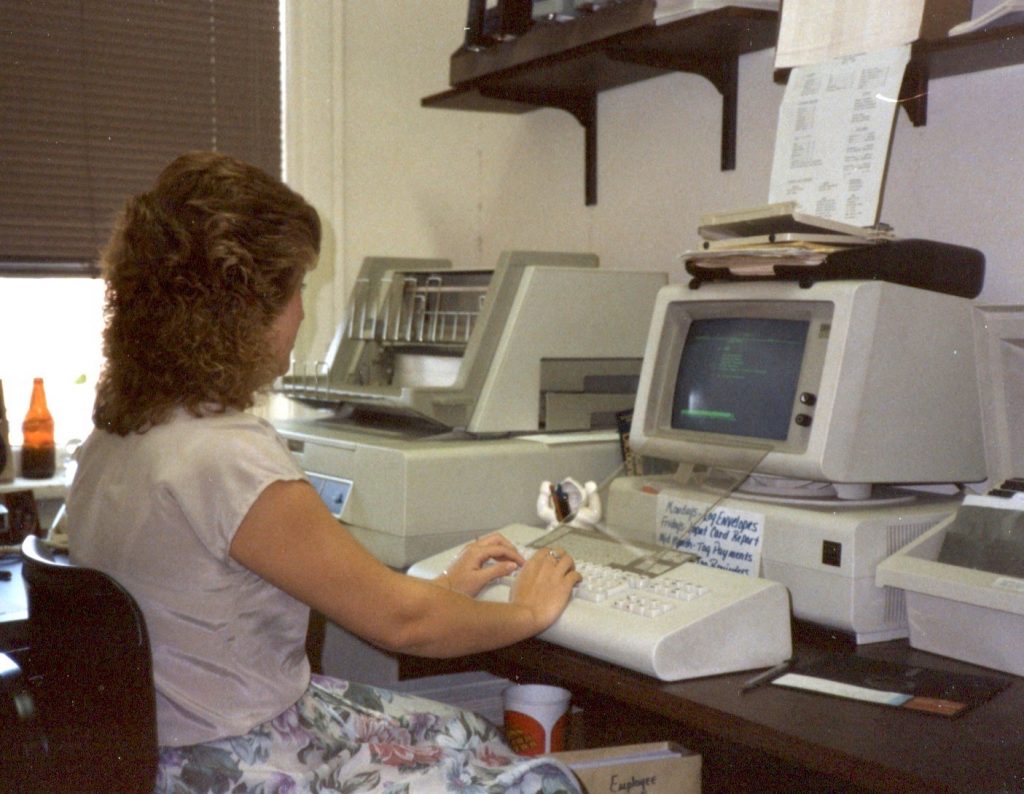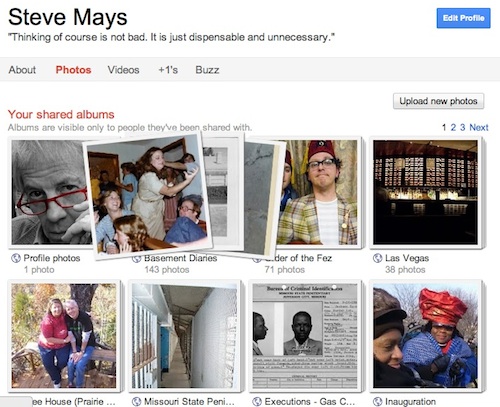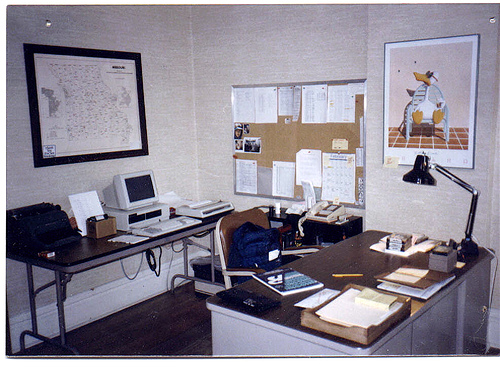“An emotion-sensing smartphone app that automatically generates someone’s “mood diary” could give psychologists all the data they need. It’s the brainchild of Matt Dobson and Duncan Barclay, founders of speech recognition firm EI Technologies, based in Saffron Walden, UK. Instead of relying on people writing diaries, the app, called Xpression, listens for telltale changes in a person’s voice that indicate whether they are in one of five emotional states: calm, happy, sad, angry or anxious/frightened. It then lists a person’s moods against the times they change, and automatically emails the list to their psychologist at the end of the day.” (New Scientist)
Category Archives: Gadgets & Apps
Scott Adams: iPhone Identity
“… your iPhone would become the primary way you identify yourself to the world. Someday the store cashier will see your face pop up on a screen when you are next in line because your phone will be transmitting your identity at all times. No more swiping credit cards or writing checks. If your actual face matches the face on the cashier’s screen, you’re good to go, and your payment preferences (credit or debit) would automatically kick in.”
“With your phone in your pocket your car doors open when you get near, the front door of your house opens when approach, your lights adjust to your personal preferences, and all of your online passwords do auto-fill. When your phone is with you, the world will continuously conform to your preferences as you pass through it.”
Write software by talking
“Sit in front of your computer and simply describe your requirements: “I want an app that lets me organize hiking trips. There should be a sign-up page, a map of hiking places, a calendar of events …” Just keep describing your requirements while the site takes shape right in front of your eyes. If you forget to include something, your computer will helpfully suggest features borrowed from similar websites on the Internet. Maybe the future of software won’t be quite that simple. But I do think that creating apps and websites will someday be no harder than building a PowerPoint presentation or using Excel. It’s heading that way.”
Messenger Bag
Flying people in NYC
Tailor-made usually, but not always, better
We’re talking websites now. The new theme here started me thinking about this.
This theme was created by StudioPress and was very affordable. Took me 15 minutes to download and install. My only contribution to the design was picking a color scheme I liked.
When I started blogging 10 years ago, I spent HOURS futzing with the design of the blog. Graphics, colors, fonts… anythign that could be changed, I changed.
And with each tweak, the site looked a little less professional. I thought I was making it “better,” but looking back, no way.
I have a theory that –in most instances– an off-the-shelf design, like the ones I get from StudioPress (and there are lots of good places to buy themes) is going to look better than a site designed from the ground up.
This is based on two assumptions:
1. The client will be very involved in the design of the custom theme
2. NO change is made to the stock theme.
When paying a lot of bucks for a custom design, the typical clinet will insist on a lot of input. The designer will try to stay close to her original vision, but it’s difficult. And once the client gets his hands on the site, he will –if humanly possible– fuck it up. We can’t help it. We have to tinker.
Let us consider now the design of the stock theme. There IS no client yet. The designer has the time and freedom to create a perfect theme, if there is such a thing. Every element carefully chosen to work with every other element.
Yes, a good developer can take one of these themes and customize them in such a way as not to destroy the original, but the client will make that very hard (see above)
Am I concered that hundreds or thousands of websites are using this exact theme? Nope. Only a fraction of said sites would ever have enough traffic to make it likely someone would notice. And if they do, well, it’s like to gorgeous models wearing the same gown to the ball. They both look great.
It’s taken me a while to get to this place. To be willing to accept that I can only make the original worse… not better.
If you want to comment on my little theory, join me over at Google+. I’ll cross post there.
Google+ Hangout
In the small town where Barb and I spent some of our best years, it was not uncommon for someone to pop in, without calling, with a six pack and just hang out. Before the evening was over, there could be 8 or 10 people, just hanging out. Nothing planned, no preparations.
I think that’s sort of what Google was going for with the Hangout feature on Google+. To make it that easy and that comfortable to hangout with friends. And I think they nailed it.
The video above does not do justice to the quality of the audio and video. Or to the ease of making it happen. I can easily imagine myself surfing mindlessly with the Hangout light on and people dropping by to chat for a few minutes..
You have to try it to appreciate it.
What did we do before computers?
It’s a question I silently ask myself from time to time, so I thought I’d try to reconstruct how I (and others) did my job when I first came to Learfield in 1984. (This photo was taken in 1985 and I’m including it with this post as a memory aid. Annotated version.)
It might be easier to to start with what we didn’t have. I’m going to say no computers even though there was a Lisa II (?) running VisiCalc. No fax machine. No mobile phones.
The bulk of my job was dealing with affiliate radio stations and there was only three ways to do that:
1. Call them on the phone
2. Send them a letter in the mail
3. Get in the car and go see them in person
Each week we would send stations a “log” showing which commercials would be airing in each of the news or farm programs we sent them via satellite. One of the secretaries had drawn a table (6 columns for M-Sa and 13 rows for the number of shows) using a ruler. This was copied (we had a copier) each week and the blank table was rolled into an IMB Selectric typewriter and the names of the sponsors typed in.
This had to be completed by Wednesday of each week in order to get them mailed and to the stations in time for their “traffic” person to insert those commercials into THEIR log for the coming week. And delay and the system fell apart.
The photo above reminds me I used a manual typewriter often enough to keep it close. The computer in the photos is a Zenith and I was the only person in the company with his own personal computer.
We also had a big IBM Displaywriter that allowed us to do mail-merge documents. Amazing tech for the time.

Next to my phone is a Rolodex with all of my contacts, each typed on the big Royal but continuously updated with scratch-throughs and margin notes. If you got fired, you wanted to have a copy of your Rolodex.
If –god forbid– we needed to get information to every network affiliate “fast,” someone had to call each station, one at at time.
One of the tools I relied upon most was my big map. You can’t see them but there is a pin showing the location of each radio station on the network. It was a thrill to add a new pin and agony to remove one.
Long before Google Docs, there was the bulletin board for all the important lists. (this was not portable)
Years later we got our first fax machines, even though most of our stations didn’t have them. We knew they would. Someone stood at the machine and keyed in the name and phone number of every radio station (or advertiser). When you wanted to blast a fax out to a “list,” you fed the document in and it called each number, transmitted the facsimile; printed a “receipt” and then called the next number on the list. It was wonderful. We didn’t have to wait 3 or 4 days for the USPS.
And it got better. As we got more computers and modems, programs like WinFax could do the job of a fax machine but with far less effort and with much greater speed. We could keep a station’s fax machine humming all day and all night, burning up expensive rolls of thermal paper. The term “spam” was years in the future.
Now we post information to our websites and stations download at their leisure. We communicate with them on Facebook and Twitter and all the rest. Email is instantaneous.
Will it get faster/better/easier still? Hard to imagine how but I assume it will
Revisiting Picassa
I’m a long-time flickr fan. Have a couple of thousand photos in my photostream. Shoot, I’m paid up until 2013. It’s a great service. And yesterday I downloaded (copied) all of those photos and posted them to my Picassa account.

The geek-o-sphere is buzzing (wait, no good)… is all atwitter (uh, that won’t work)… talking about Google+, the new social initiative from Google. If you haven’t followed this, it’s not important, except to explain why I’m exploring another place to put my photos online.
I’m a big fan of most Google services (Gmail, Reader, YouTube, Calendar, Maps, etc etc) and all of these will –eventually– be tightly integrated with Google+. It dawned on me that photos was about the only thing I was not using Google for.
No one knows if Google+ will be a success but I’m hoping that it is and decided it made sense to bring my pix under the Google tent.
And if you have an invite…
Shortmail
Shortmail.com is designed to create a digestible inbox. By limiting messages to 500 characters, Shortmail is “stressing conciseness.” Like Twitter, Shortmail features a character counter which tracks each letter typed–reach the max, and Shortmail will not allow you to send the message. The same restriction applies to messages received. — More at FastCompany
You can Shortmail me at: smaysdotcom@shortmail.com

